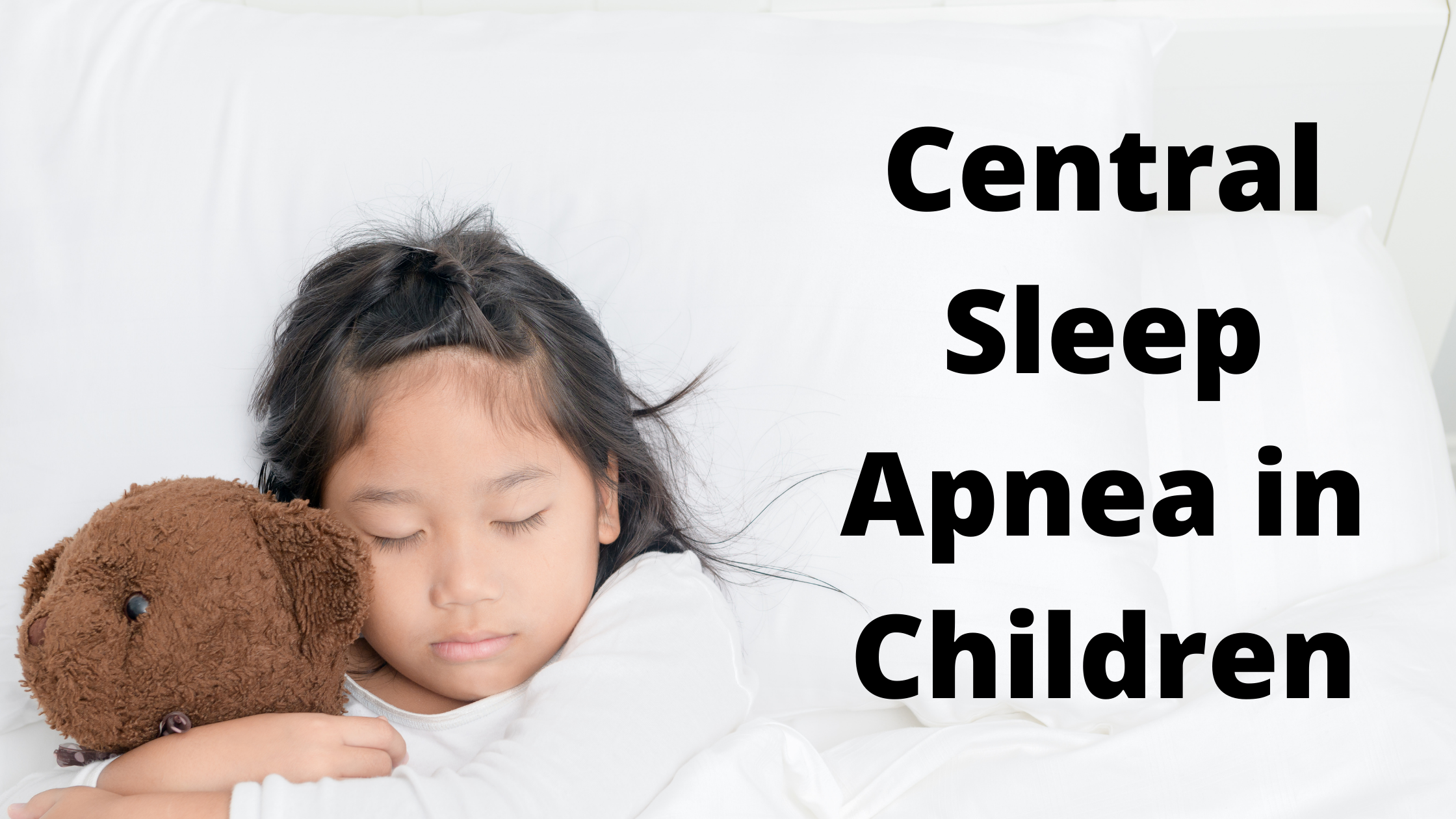
Sleep apnea occurs when one stops breathing throughout the night, taking small pauses, and then begins gasping for air to begin breathing again. It can be very disruptive to one's sleep, and very concerning for those who observe this sleep pattern. Sleep apnea can be divided into central (CSA) and obstructive (OSA). Obstructive occurs when something in the back of the throat prevents one from breathing. Those who are overweight, have a wide neck, and males are at increased risk for developing OSA.
CSA can be a bit more alarming because it's an issue with the brain, and not with the muscles in the back of the neck. We are going to talk about CSA in children, and what are appropriate treatment steps.
What is central sleep apnea?
As discussed before, sleep apnea is when something disrupts your breathing while you are sleeping. The most common type is obstructive - blockage at the back of the throat due to muscles relaxing or the jaw pushing back and blocking proper airflow. This is demonstrated by snoring, choking, and cessations in breathing.
Central sleep apnea, is less common, but potentially more concerning, because it is an issue with the brain. Your brain doesn't signal to your muscles, so you top breathing briefly or breathe so lightly, that you don't get enough oxygen.
It is reported that 1-5% of all children have some type of sleep apnea. As a parent, it may be hard to identify sleep apnea, as you are not monitoring their sleep habits, but if they sleep at daycare, or if you notice excessive snoring, then these may be clues that something is going on.
Causes and Symptoms
It can be unclear why children get CSA, but there are a number of things associated with the development of CSA. These include:
- premature birth
- smoking by the mother during pregnancy
- brain tumors
- cerebral palsy
- head injury
- problems at the base of the skull, or brainstem
- high-altitude sleeping
- use of narcotics or opioids
Common symptoms include sudden and frequent wakeups with breathlessness, daytime sleepiness, headaches in the morning, and trouble focusing on a task.
You or your children's care providers may be able to notice these changes and associate it with issues like ADHD or some other mental health disorder. CSA can be hard to spot, but is important to keep in mind, especially if it seems like your child isn't sleeping very well.
Other signs of not sleeping well are nighttime bedwetting, and being very hard to awake in the morning. They also may be falling asleep at school, or very irritable and moody because they are not getting enough sleep.
Diagnosing CSA
Keep a diary or log of your child's sleeping habits. When you visit the doctor, they will want to know how long these things have been happening, and how often. The more detail you can provide them, the more efficient and productive your appointment will be.
If your doctor thinks they have CSA, then they will refer them to an overnight sleep study. On the night of the test, medical professionals will attach monitoring devices to your child's head and body to monitoring their breathing, brain waves, and heart rate during different stages of sleep. A sleep specialist will interpret the results to see if your child has CSA.
It's a good idea to use a sleep lab that has experience with children. Sleep studies may be strange and uncomfortable for children, so if the space is child-friendly without large beeping and scary devices, they may feel more comfortable to go to sleep so the doctors can get an accurate reading.
If your child is determined to have CSA, additional tests may be warranted to find the cause.
Treatment for CSA
There are a few options for treating central sleep apnea. One is to treat the underlying cause. If additional tests point to a root cause, then doctors will be able to attend to that and see if the CSA Improves.
Another one is watch and wait. Children are growing and developing so fast, that they may eventually grow out of it as their brain forms. They will require follow-up studies to see if things get better.
More oxygen is also a treatment option, especially for those living at high altitudes. Breathing can be more difficult as the oxygen in the air becomes less available with elevated altitudes.
Breathing assistance may be necessary in order to ensure children are getting adequate oxygen. A BiPAP or CPAP machine delivers light air pressure through your child's nose and mouth to help them breathe.
Medication is another option if your child can't tolerate the two machines, your doctor may recommend drugs that can help normalize breathing patterns, including:
Finally, surgery, may be an option if the cause is severe enough. A Chiari malformation is a condition where the skull is small or misshapen and pushes on an area of the brain. Your doctor may suggest surgery in order to solve this issue.
If you are concerned about your child's sleeping, then please click the orange button below to take a free online sleep test and get in touch with one of our sleep health professionals.
https://www.webmd.com/sleep-disorders/sleep-apnea/central-sleep-apnea-in-children

